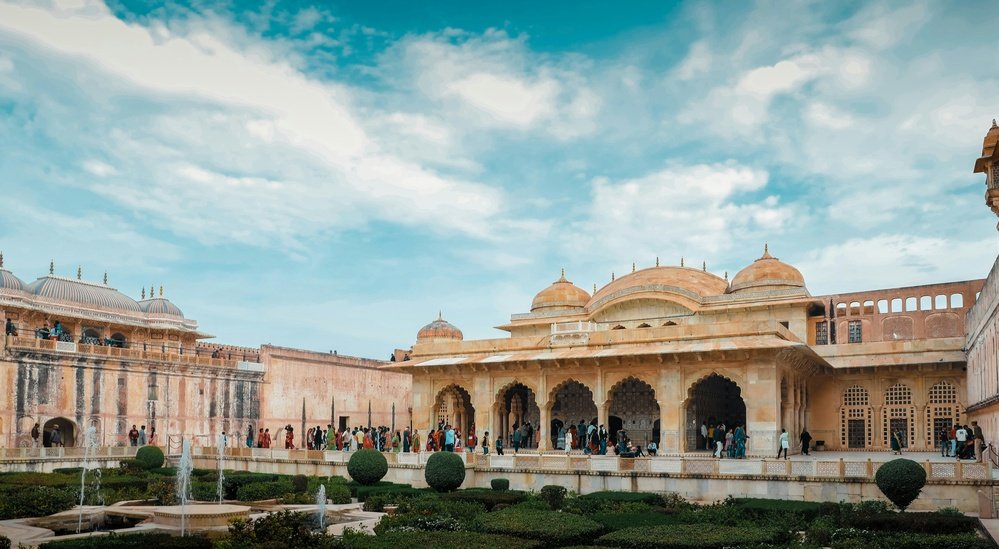Rajasthan, often known for its majestic forts, royal palaces, and vibrant culture, also offers an incredible experience for wildlife enthusiasts. Beyond the desert dunes and historic cities lies a diverse ecosystem filled with unique flora and fauna. If you are an adventure lover or someone fascinated by nature, Rajasthan Wildlife Tourism promises unforgettable journeys through its varied national parks and wildlife sanctuaries. Here’s a guide to the top Rajasthan wildlife tourism destinations that you must visit to witness the wild side of this royal state.
1. Ranthambore National Park: The Tiger’s Realm
One of the most famous wildlife destinations in Rajasthan, Ranthambore National Park is a hotspot for tiger sightings and wildlife photography. Located near Sawai Madhopur, this park spans over 1,300 square kilometers and is home to a significant population of Bengal tigers. The park’s rich biodiversity also includes leopards, sloth bears, hyenas, jackals, and various deer species.
Visitors can enjoy thrilling jeep safaris that take them through dense forests, ruined forts, and ancient temples nestled within the park. The best time to visit Ranthambore is from October to June, when the weather is favorable and the chances of spotting wildlife are high. This destination epitomizes Rajasthan Wildlife Tourism for tiger lovers and nature photographers.
2. Sariska Tiger Reserve: A Blend of Wildlife and History
Sariska Tiger Reserve is another gem in Rajasthan’s wildlife tourism crown. Located in the Alwar district, Sariska offers a perfect blend of wildlife adventure and historical exploration. The reserve covers about 866 square kilometers and is home to tigers, leopards, striped hyenas, and chital deer.
Besides wildlife, Sariska is famous for its ancient ruins of the Kankwadi Fort inside the reserve, adding a historical allure to your safari experience. Bird watchers will also delight in the variety of species found here, including the crested serpent eagle and Indian peafowl.
3. Keoladeo National Park: Bird Watcher’s Paradise
Also known as Bharatpur Bird Sanctuary, Keoladeo National Park is a UNESCO World Heritage Site and one of the best bird sanctuaries in India. Situated in the Bharatpur district, this park attracts migratory birds from Siberia, Central Asia, and China during the winter months, making it a must-visit for bird lovers.
With over 370 species of birds recorded here, including the rare Siberian crane, Keoladeo is an ideal destination for bird watching and photography. The park’s wetlands and grasslands create a perfect habitat for waterfowl, making it a unique highlight of Rajasthan Wildlife Tourism.
4. Desert National Park: The Wild Desert Experience
For those wanting to explore the wilderness of the Thar Desert, Desert National Park near Jaisalmer offers a unique experience. This park is the largest wildlife sanctuary in Rajasthan, covering over 3,162 square kilometers of arid desert landscape.
Despite the harsh conditions, the park supports a surprising variety of wildlife, including the elusive Great Indian Bustard, desert fox, chinkara (Indian gazelle), and various reptiles. The Desert National Park provides an extraordinary opportunity to witness how wildlife adapts to extreme environments and is perfect for nature lovers seeking something different in Rajasthan Wildlife Tourism.
5. Mount Abu Wildlife Sanctuary: A Cool Retreat for Nature Lovers
Located in the Aravalli Hills, Mount Abu is Rajasthan’s only hill station and offers a cool climate alongside rich biodiversity. The Mount Abu Wildlife Sanctuary is home to several species of birds, mammals, and reptiles, including the sloth bear, nilgai, Indian civet, and peafowl.
The sanctuary is dotted with beautiful waterfalls and viewpoints, making it an ideal place for trekking and nature walks. For travelers seeking a mix of wildlife and scenic beauty, Mount Abu stands out as a unique destination in Rajasthan Wildlife Tourism.
Tips for Wildlife Tourism in Rajasthan
- Plan Your Visit in the Right Season: The best time to explore Rajasthan’s wildlife parks is from October to March when the weather is pleasant and animals are more active.
- Book Safari in Advance: Popular parks like Ranthambore and Sariska require advance booking for safaris, so plan ahead to secure your spot.
- Hire Experienced Guides: Knowledgeable guides can enhance your experience by spotting wildlife and explaining the local ecology.
- Respect Nature: Always maintain a safe distance from animals and avoid disturbing their natural habitat.
- Carry Essential Gear: Binoculars, cameras with zoom lenses, comfortable walking shoes, and sun protection are must-haves.
Why Choose Rajasthan Wildlife Tourism?
Rajasthan’s wildlife tourism is unique because it combines the allure of the desert and forests with royal heritage and cultural richness. Unlike dense jungles in other parts of India, Rajasthan’s wildlife areas offer open landscapes, making animal sightings easier and photography more rewarding.
The state’s dedication to wildlife conservation and sustainable tourism ensures that visitors can enjoy nature while supporting local communities. Whether you are a seasoned wildlife enthusiast or a casual traveler, Rajasthan’s diverse ecosystems promise thrilling safaris and serene moments in nature.
Rajasthan is much more than forts and palaces; its wilderness invites you to explore the untamed beauty of India’s royal state. From tigers prowling the dense forests of Ranthambore to the migratory birds gracing the wetlands of Bharatpur, Rajasthan Wildlife Tourism offers unforgettable adventures for every nature lover. So pack your bags and get ready to explore the wild side of Rajasthan on your next trip!

